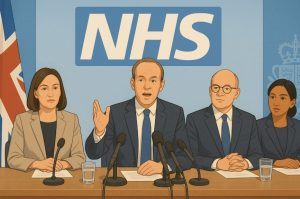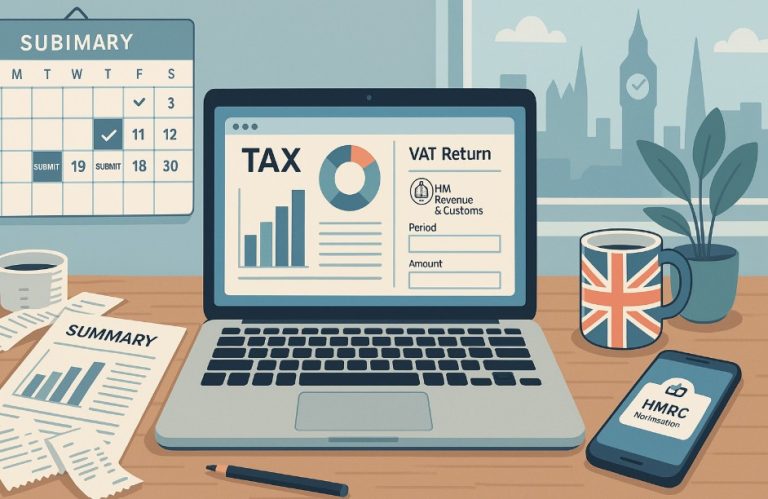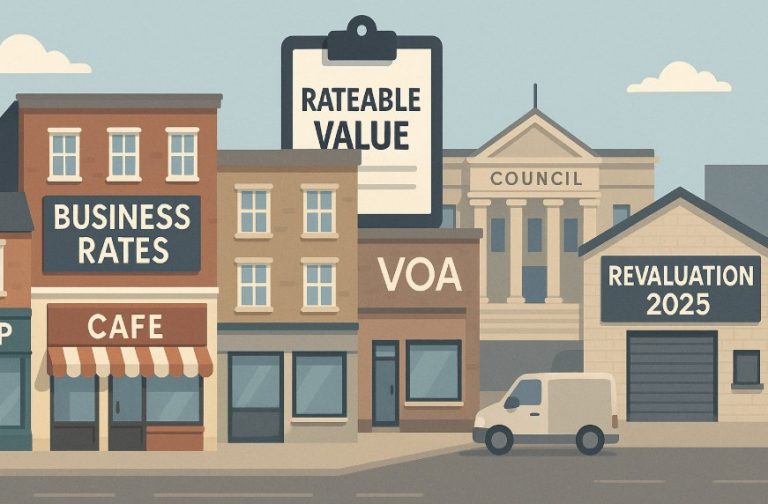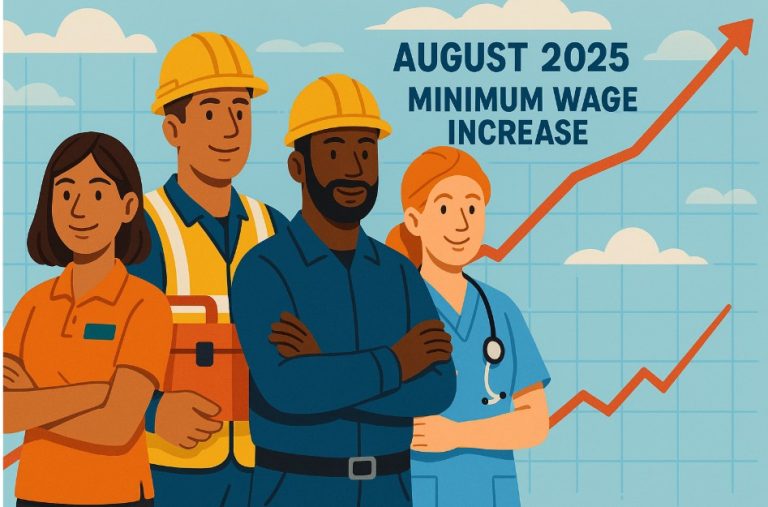NHS Pay Rise 2025: What the New Pay Deal Means for UK Healthcare Workers?
In a year marked by persistent inflation, mounting public sector discontent, and increasing pressure on public services, the UK government’s announcement of the NHS pay rise for 2025 was always going to stir debate.
While ministers have promoted the decision as a fair and necessary step towards rebuilding a strained health service, trade unions, medical professionals, and analysts are divided on whether it marks meaningful progress or a repetition of past missteps.
With nurses, junior doctors, and other essential workers still recovering from years of real-terms pay cuts, the government’s offer, though above previous budget forecasts, has been met with a chorus of dissatisfaction.
The question many are asking is this: does the 2025 pay deal recognise the true value of NHS staff, or does it merely paper over long-standing cracks?
Government’s Position: What Was Announced?

On 22 May 2025, Health Secretary Wes Streeting confirmed the details of the NHS pay award for 2025–26. Following recommendations from independent pay review bodies, the government agreed to implement a structured pay increase for NHS employees, which will be applied retroactively from 1 April 2025 and appear in workers’ pay packets from August 2025.
The pay increases include:
- A 3.6% rise for Agenda for Change (AfC) staff those covering the majority of NHS roles including nurses, paramedics, midwives, and support staff.
- A 4% increase for consultants, GPs, and dentists.
- An average 5.4% increase for resident doctors (formerly junior doctors), made up of a 4% base rise and a £750 consolidated payment.
This pay award marks the second consecutive year of above-inflation increases, following a 5.5% rise for AfC staff in 2024. The government framed the decision as part of a wider effort to rebuild the NHS, claiming that these rises represent progress in rectifying a decade of pay stagnation and morale erosion.
Financial Context and Funding Strategy
The Treasury had initially budgeted for no more than a 2.8% public sector pay increase, citing inflationary pressures and fiscal constraints.
However, the Department of Health and Social Care (DHSC) has managed to stretch the figures by cutting central administrative costs, slashing NHS England’s corporate budgets, reducing integrated care board costs by 50%, and decreasing headcount in non-clinical roles.
This strategy, ministers argue, ensures that nhs pay rise july will not impact frontline service delivery. Crucially, it allows the government to honour pay review body recommendations without dipping into clinical budgets or compromising patient care.
NHS Pay Uplift Overview 2025
| Staff Category | Base Rise (%) | Additional Payment | Average Increase (%) | Funded From |
| Agenda for Change (AfC) | 3.6% | N/A | 3.6% | DHSC admin and structural savings |
| Resident Doctors | 4.0% | £750 | 5.4% | DHSC savings |
| Consultants and GPs | 4.0% | N/A | 4.0% | DHSC budget reallocations |
| Dentists | 4.0% | Contract uplift | 4.0% | Departmental reserves |
Despite this, the overall size of the increase remains modest compared to union demands and economic realities.
Union Backlash: A Growing Tide of Discontent

If ministers hoped to avert unrest by offering above-inflation rises, they have been swiftly disappointed. Across the NHS, union leaders have condemned the pay awards as insufficient and unfairly distributed.
The British Medical Association (BMA) responded to the resident doctor offer averaging 5.4% by stating it was “woefully inadequate” in the context of over a decade of pay erosion.
The BMA had previously argued for a 35% uplift to fully restore junior doctors’ salaries in real terms, citing cumulative losses due to inflation. The union has now begun balloting its 55,000 resident doctor members for potential strike action.
The Royal College of Nursing (RCN) went further, labelling the smaller increase for nurses (3.6%) as “grotesque” compared to doctors’ awards. The RCN maintains that the existing pay review body process is structurally biased, locking nursing professionals into the lower end of the public sector wage hierarchy. The union is consulting members on next steps, including the possibility of industrial action.
Similar grievances have emerged among consultants, with the Hospital Consultants and Specialists Association stating that a 4% rise constitutes a real-terms pay cut, particularly as inflation unexpectedly jumped to 3.5% in April 2025—its highest point in over a year.
Wider Public Sector Impact and Comparisons
The NHS is not the only sector grappling with unrest. Teachers in England have received a 4% pay rise for 2025, but the decision to require schools to absorb 1% of the cost from their existing budgets has triggered a new dispute. The National Education Union (NEU) has warned that this underfunded rise could lead to job losses, increased workloads, and cuts in services for pupils.
Civil servants were granted a 3.25% increase, which has also been criticised by the PCS union, especially in light of rising inflation and a previously frozen wage climate. The armed forces received a 4.5% uplift, with senior officers getting 3.75%.
These figures place the NHS awards in the middle range, though health workers argue their frontline status and pandemic contributions should warrant higher compensation.
Structural Reforms and Future Commitments

The government’s Plan for Change includes more than pay adjustments. According to Wes Streeting, ministers are committed to meaningful structural reform of the Agenda for Change pay system, beginning in 2026. Negotiations with unions and employers will aim to resolve long-standing issues related to banding, progression, and job evaluation.
The DHSC also announced legislative changes to criminalise the misuse of the title “nurse,” enhanced staff protections against workplace violence, and investments into workplace flexibility and wellbeing. These reforms are seen as essential to rebuilding trust and improving morale after years of disputes and systemic strain.
Implementation Timeline: Pay with Greater Speed
In contrast to past years, where pay rises were often delayed, the government has accelerated the implementation schedule for 2025:
- All pay uplifts are backdated to 1 April 2025.
- Payments will be included in August pay packets, two months earlier than last year.
- Pay review processes for 2026 will begin in July 2025, with the aim of issuing awards early in the next financial year.
This faster approach is part of a wider government ambition to modernise how public sector pay is reviewed and delivered, providing greater certainty and timeliness for workers.
NHS Staff: Recognition or a Continued Struggle?

The government has presented the 2025 NHS pay rise as a symbol of respect and recognition for the vital role played by health workers in rebuilding a broken system.
Wes Streeting has pointed to substantial increases in starting salaries over recent years, including a £4,000 rise for Band 2 and Band 5 staff since 2022. He claims the latest awards reflect a more respectful and collaborative era between government and workforce.
Yet the mood among healthcare workers tells a different story. The increases, though real, remain modest against the scale of past pay erosion, rising living costs, and the burden placed on NHS staff throughout the COVID-19 crisis and beyond. For many, this year’s award still feels like a compromise rather than a true restoration.
The tension between fiscal restraint and worker satisfaction is evident. With union ballots underway, the NHS faces the renewed possibility of strikes, a scenario ministers had hoped to avoid after last year’s temporary industrial truce.
Conclusion
The NHS pay rise of 2025 may represent progress on paper, but in practice, it leaves key stakeholders unconvinced. While the government points to structural reforms, faster payment schedules, and above-inflation increases, health unions argue these measures fall short of what’s needed to address the workforce crisis and restore fairness.
With funding reforms and legislative changes still on the horizon, the real test will be whether future negotiations can move beyond short-term appeasement and towards long-term solutions. In the meantime, the prospect of renewed industrial action remains a powerful reminder that recognition without restoration may not be enough to secure the NHS workforce of tomorrow.
Frequently Asked Questions
What is the official NHS pay rise for 2025?
Agenda for Change staff will receive a 3.6% increase. Doctors and dentists get a 4% base rise, and resident doctors receive 5.4% on average, including a £750 payment.
Why are unions criticising the 2025 pay deal?
Unions argue the increases don’t keep pace with inflation or reverse years of real-terms pay cuts. Some groups, like the BMA, are preparing to strike.
Is the government funding the pay rise without cutting services?
Yes. The Department of Health has said funding comes from administrative savings and not from frontline NHS budgets.
How does this compare to other sectors?
Teachers received 4%, but must fund part of it themselves. Civil servants were awarded 3.25%, and the armed forces got 4.5%.
Will there be changes to the NHS pay structure?
Yes. The government has agreed to reform the Agenda for Change banding system starting in 2026, in partnership with unions and employers.
When will NHS staff see the pay rise in their pay packets?
Pay will be backdated to April and paid out starting in August 2025.
Is industrial action likely in 2025?
Yes. Multiple unions are holding ballots to consider strike action in protest of what they see as inadequate and unfair pay settlements.







